[Fong Chan Onn] Propelling ASEAN toward economic community
By Korea HeraldPublished : Dec. 25, 2014 - 21:26
Malaysia will assume the chairmanship of ASEAN in 2015. However, a survey by the ASEAN secretariat in 2013 indicated that the average Malaysian lacked enthusiasm over being part of ASEAN.
Who can blame us if the first thing that comes to our minds about having more porous borders is ― why doesn’t my char kway teow (fried flat noodles) taste the same anymore?
 Similarly, the ASEAN secretariat survey also showed that 3 out of 5 ASEAN citizens lacked a basic understanding of ASEAN.
Similarly, the ASEAN secretariat survey also showed that 3 out of 5 ASEAN citizens lacked a basic understanding of ASEAN.
The result is hardly surprising as ASEAN lacks a cohesive polity or a raison d’etre to begin with.
To generate more enthusiastic acceptance of ASEAN amongst ASEANites and Malaysians, among the issues we need to overcome are our cultural differences, political diversity and absence of strong economic leadership.
Unlike the European Union, whose members have a long record of cultural identity, ASEAN members evolved out of a very different historical context.
Malaysia, Singapore, Brunei and Myanmar were British colonies. Vietnam, Laos and Cambodia (then Indo-China) were occupied by the French, Indonesia by the Dutch and Philippines by Spain and then the United States. Thailand was the only independent state.
Further, for Southeast Asia, the first notion of the concept of Pan-Asianism was conceived out of the Japanese Occupation, notably the concept of The Greater East Asia Co-Prosperity Sphere. As such, the revival of an integrated bloc for Southeast Asians was a political hard sell.
It was not until the imminent fall of Saigon to the then communist North Vietnam that compelled the other noncommunist Southeast Asian nations to form ASEAN in 1967 as a shelter against the falling dynamos.
ASEAN nations are also very different with respect to their political systems of governance.
Malaysia and Singapore adopted the British parliamentary system, while Myanmar will be holding its first democratic elections since 1990 under the new military administration.
Vietnam, Laos and Cambodia, of course, are under communist governance.
In Thailand, we just saw a change in government through a coup and currently subsumed under military rule.
Both the Philippines and Indonesia have adopted the U.S. system of democracy coming out of their once dictatorship regimes.
ASEAN also lacks economic leadership the likes of Bank of England or Deutsche Bundesbank to provide a strong financial framework to stabilize the region.
Singapore may be the richest country in, but it does not have the economic strength to support the whole of ASEAN. Myanmar does not even have a proper banking system let alone a financial regulatory framework to weather a financial crisis, if ever one happens.
Can talent mobility drive more openness among ASEANites?
Given the absence of a cohesive ASEAN raison d’etre, what can be the driving force to propel ASEAN towards being an ASEAN Economic Community?
Against the major barriers to the formation of the AEC, I believe that labor and talent mobility could be the pushing force that can drive the AEC to becoming a reality.
From coffee shops in the new villages to sophisticated Bangsar eateries, it is hard not to notice the presence of large pools of non-Malaysian ASEAN workers, particularly Indonesians, Filipinos and Myanmar folks.
As Minister of Human Recourses I once was invited to lunch with the Singapore Minister of Defense Ng Eng Hen, my then Singapore counterpart. The lady at the upmarket restaurant welcomed us in impeccable Queen’s English.
My Singapore counterpart made it a point to tell me that she was a Malaysian from Kuantan. “But of course,” was my immediate response which was an attempt to hide my embarrassed smile of why a talented local would rather work overseas than in her home country.
“Not only head waitresses, we also have many Malaysian medical specialists, engineers, architects and tradesmen in the Singapore enclave,” he added as a matter of fact.
The reality is that the diversity in economic development among ASEAN states has created irresistible pull and push factors for ASEAN talents and workers to flow from one nation to another in search of their dreams.
Just like the EU, until this economic diversity is equalized the cross-flow of talents among ASEAN states will continue irrespective of whatever barriers each nation can erect to stem such a tide.
We Malaysians need to ask ourselves ― does ASEAN need a functioning single economic bloc? The logical economic answer is yes as it will bring greater prosperity for our citizens and peace for the region.
Does ASEAN have to be a single political bloc? The answer is no. The point being is that the equalization to a common political platform is not necessarily the answer to greater prosperity.
Today, trade, technology, capital and goods and services are more globally connected than ever.
Concentration of economic activities into hubs is the trend to attain efficiency in the increasingly competitive environment.
In the ASEAN context, for example, Singapore is the financial hub, Kuala Lumpur the low-cost aviation hub and Bangkok the automobile manufacturing hub.
These trends have created a swell in global and ASEAN workers and talent mobility.
PricewaterhouseCoopers conducted a study on talent mobility and it was shown that governments and regulators would accept the economic benefits of talent mobility if this can stimulate economic growth.
This finding will lead to greater collaboration between governments and businesses, and within the business community, to remove some of the barriers to mobility around the world.
In the context of Malaysia- ASEAN, the AEC can create a friendlier framework for our talents to move to more competitive environments to acquire experience, as well as for ASEAN talents to move to Malaysia to increase our competitiveness.
This is not necessarily a bad thing, especially for young Malaysians seeking new experiences beyond our shores.
Only people can drive the AEC
The word “ASEAN Economic Community” already tells us that communities are built on people ― not regulations, policies, railroads or social media platforms.
Embracing talent mobility is no longer a choice as all advancing nations depend on foreign talents. Each nation cannot be expected to produce exactly the number of talents in the various types of professions that is required at any time in the course of its development.
Already, about 3 million Indonesians are currently working in Malaysia.
We need to expand the foreign workers’ skill to the managerial and professional categories, as it allows Malaysians to improve from coworking.
In this respect, in order to ensure that a common ASEAN standard is maintained, we should have cross-border recognition of professional and trade certificates.
For example, ASEAN Boards for medical doctors, architects and engineers should be formed. These boards can specify minimum standard requirements for registration and once registered the talents can be accepted anywhere in ASEAN.
Likewise, we can have common ASEAN certification for trades such as bricklayers, electricians, mechanics, nursing and other skills. Once certified, the tradesman can freely work across the ASEAN region.
We should abandon the fear of competing among ourselves and set up immigration barriers that, at the end of the day, become impossible to supervise.
Once there is harmonizing of ASEAN standards, it will open up greater opportunities for skill upgrading in all areas of human resources, leading to improvements in work quality in the various ASEAN professional and craft categories.
When there is a need for a new industry in a certain ASEAN state, it could be driven organically by ASEAN talents from nations that already have such an industry.
For example, Myanmar badly needs improvements to its financial infrastructure. Talents from Singapore and Malaysia can spearhead this. AEC then becomes the framework to facilitate the process.
Let us harness the ASEAN diversity in human resources by systematically facilitating free flow of ASEAN workers and talents to where they are needed the most.
In the process, we can unleash the full potential of the 626 million ASEANites and develop ASEAN into the formidable economic region that it ought to be.
By Fong Chan Onn
Fong Chan Onn is a Malaysian politician and a former Minister of Human Resources. ― Ed.
(Asia News Network)
Who can blame us if the first thing that comes to our minds about having more porous borders is ― why doesn’t my char kway teow (fried flat noodles) taste the same anymore?
 Similarly, the ASEAN secretariat survey also showed that 3 out of 5 ASEAN citizens lacked a basic understanding of ASEAN.
Similarly, the ASEAN secretariat survey also showed that 3 out of 5 ASEAN citizens lacked a basic understanding of ASEAN.The result is hardly surprising as ASEAN lacks a cohesive polity or a raison d’etre to begin with.
To generate more enthusiastic acceptance of ASEAN amongst ASEANites and Malaysians, among the issues we need to overcome are our cultural differences, political diversity and absence of strong economic leadership.
Unlike the European Union, whose members have a long record of cultural identity, ASEAN members evolved out of a very different historical context.
Malaysia, Singapore, Brunei and Myanmar were British colonies. Vietnam, Laos and Cambodia (then Indo-China) were occupied by the French, Indonesia by the Dutch and Philippines by Spain and then the United States. Thailand was the only independent state.
Further, for Southeast Asia, the first notion of the concept of Pan-Asianism was conceived out of the Japanese Occupation, notably the concept of The Greater East Asia Co-Prosperity Sphere. As such, the revival of an integrated bloc for Southeast Asians was a political hard sell.
It was not until the imminent fall of Saigon to the then communist North Vietnam that compelled the other noncommunist Southeast Asian nations to form ASEAN in 1967 as a shelter against the falling dynamos.
ASEAN nations are also very different with respect to their political systems of governance.
Malaysia and Singapore adopted the British parliamentary system, while Myanmar will be holding its first democratic elections since 1990 under the new military administration.
Vietnam, Laos and Cambodia, of course, are under communist governance.
In Thailand, we just saw a change in government through a coup and currently subsumed under military rule.
Both the Philippines and Indonesia have adopted the U.S. system of democracy coming out of their once dictatorship regimes.
ASEAN also lacks economic leadership the likes of Bank of England or Deutsche Bundesbank to provide a strong financial framework to stabilize the region.
Singapore may be the richest country in, but it does not have the economic strength to support the whole of ASEAN. Myanmar does not even have a proper banking system let alone a financial regulatory framework to weather a financial crisis, if ever one happens.
Can talent mobility drive more openness among ASEANites?
Given the absence of a cohesive ASEAN raison d’etre, what can be the driving force to propel ASEAN towards being an ASEAN Economic Community?
Against the major barriers to the formation of the AEC, I believe that labor and talent mobility could be the pushing force that can drive the AEC to becoming a reality.
From coffee shops in the new villages to sophisticated Bangsar eateries, it is hard not to notice the presence of large pools of non-Malaysian ASEAN workers, particularly Indonesians, Filipinos and Myanmar folks.
As Minister of Human Recourses I once was invited to lunch with the Singapore Minister of Defense Ng Eng Hen, my then Singapore counterpart. The lady at the upmarket restaurant welcomed us in impeccable Queen’s English.
My Singapore counterpart made it a point to tell me that she was a Malaysian from Kuantan. “But of course,” was my immediate response which was an attempt to hide my embarrassed smile of why a talented local would rather work overseas than in her home country.
“Not only head waitresses, we also have many Malaysian medical specialists, engineers, architects and tradesmen in the Singapore enclave,” he added as a matter of fact.
The reality is that the diversity in economic development among ASEAN states has created irresistible pull and push factors for ASEAN talents and workers to flow from one nation to another in search of their dreams.
Just like the EU, until this economic diversity is equalized the cross-flow of talents among ASEAN states will continue irrespective of whatever barriers each nation can erect to stem such a tide.
We Malaysians need to ask ourselves ― does ASEAN need a functioning single economic bloc? The logical economic answer is yes as it will bring greater prosperity for our citizens and peace for the region.
Does ASEAN have to be a single political bloc? The answer is no. The point being is that the equalization to a common political platform is not necessarily the answer to greater prosperity.
Today, trade, technology, capital and goods and services are more globally connected than ever.
Concentration of economic activities into hubs is the trend to attain efficiency in the increasingly competitive environment.
In the ASEAN context, for example, Singapore is the financial hub, Kuala Lumpur the low-cost aviation hub and Bangkok the automobile manufacturing hub.
These trends have created a swell in global and ASEAN workers and talent mobility.
PricewaterhouseCoopers conducted a study on talent mobility and it was shown that governments and regulators would accept the economic benefits of talent mobility if this can stimulate economic growth.
This finding will lead to greater collaboration between governments and businesses, and within the business community, to remove some of the barriers to mobility around the world.
In the context of Malaysia- ASEAN, the AEC can create a friendlier framework for our talents to move to more competitive environments to acquire experience, as well as for ASEAN talents to move to Malaysia to increase our competitiveness.
This is not necessarily a bad thing, especially for young Malaysians seeking new experiences beyond our shores.
Only people can drive the AEC
The word “ASEAN Economic Community” already tells us that communities are built on people ― not regulations, policies, railroads or social media platforms.
Embracing talent mobility is no longer a choice as all advancing nations depend on foreign talents. Each nation cannot be expected to produce exactly the number of talents in the various types of professions that is required at any time in the course of its development.
Already, about 3 million Indonesians are currently working in Malaysia.
We need to expand the foreign workers’ skill to the managerial and professional categories, as it allows Malaysians to improve from coworking.
In this respect, in order to ensure that a common ASEAN standard is maintained, we should have cross-border recognition of professional and trade certificates.
For example, ASEAN Boards for medical doctors, architects and engineers should be formed. These boards can specify minimum standard requirements for registration and once registered the talents can be accepted anywhere in ASEAN.
Likewise, we can have common ASEAN certification for trades such as bricklayers, electricians, mechanics, nursing and other skills. Once certified, the tradesman can freely work across the ASEAN region.
We should abandon the fear of competing among ourselves and set up immigration barriers that, at the end of the day, become impossible to supervise.
Once there is harmonizing of ASEAN standards, it will open up greater opportunities for skill upgrading in all areas of human resources, leading to improvements in work quality in the various ASEAN professional and craft categories.
When there is a need for a new industry in a certain ASEAN state, it could be driven organically by ASEAN talents from nations that already have such an industry.
For example, Myanmar badly needs improvements to its financial infrastructure. Talents from Singapore and Malaysia can spearhead this. AEC then becomes the framework to facilitate the process.
Let us harness the ASEAN diversity in human resources by systematically facilitating free flow of ASEAN workers and talents to where they are needed the most.
In the process, we can unleash the full potential of the 626 million ASEANites and develop ASEAN into the formidable economic region that it ought to be.
By Fong Chan Onn
Fong Chan Onn is a Malaysian politician and a former Minister of Human Resources. ― Ed.
(Asia News Network)
-
Articles by Korea Herald


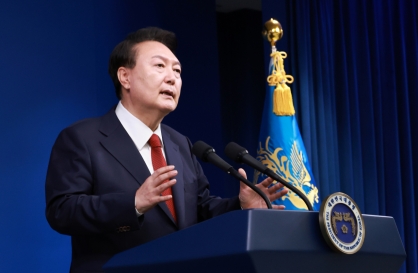


![[K-pop’s dilemma] Can K-pop break free from ‘fandom’ model?](http://res.heraldm.com/phpwas/restmb_idxmake.php?idx=644&simg=/content/image/2024/05/09/20240509050541_0.jpg&u=20240509173751)
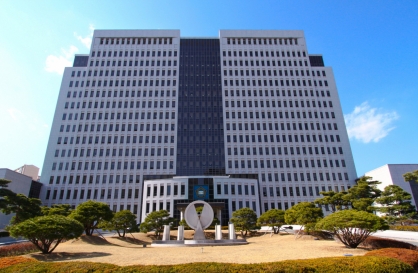



![[News Analysis] Yoon's first 2 years marked by intense confrontations, lack of leadership](http://res.heraldm.com/phpwas/restmb_idxmake.php?idx=644&simg=/content/image/2024/05/09/20240509050612_0.jpg&u=20240509233252)
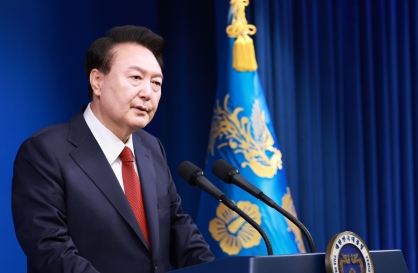



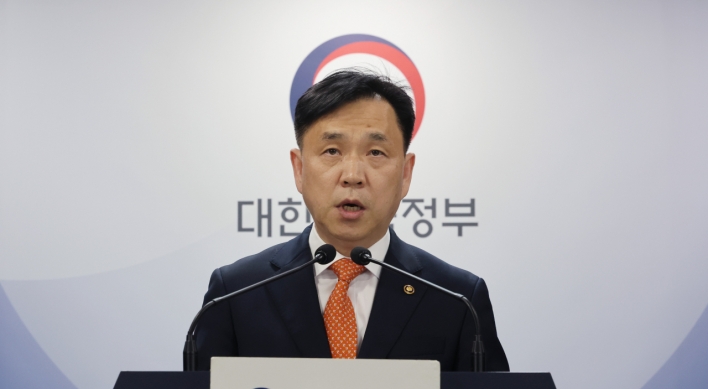


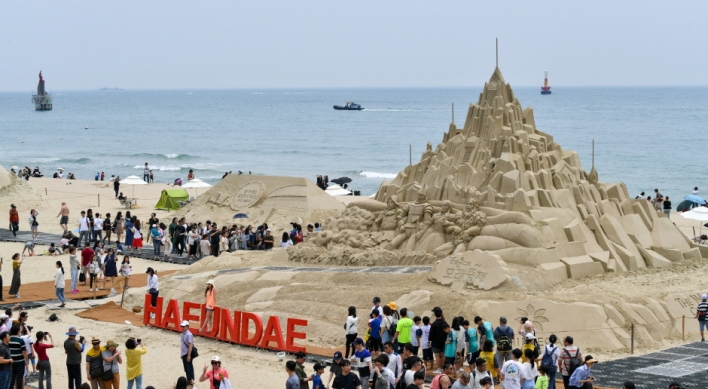
![[Today’s K-pop] NCT’s Mark to drop 1st solo album in February 2025](http://res.heraldm.com/phpwas/restmb_idxmake.php?idx=642&simg=/content/image/2024/05/10/20240510050597_0.jpg&u=)